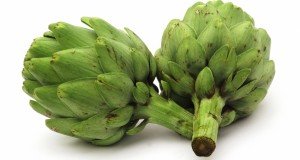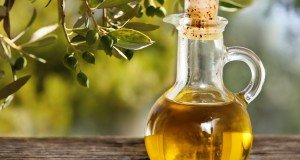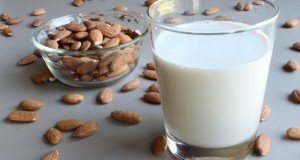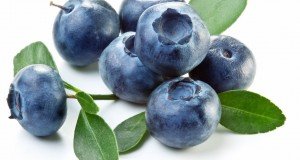Which is better for humans: Vegetarian or animal-based diet?
(NaturalHealth365) This is like asking, “do birds have lips?” or “do snakes have hips?”. They are all equally absurd questions and only serve to indicate that the one posing the question has either never thought about it clearly or has allowed their appetites, prejudices and addictions determine their conclusions.
All life on planet earth is sustained by the energy from the sun. This energy is converted from light to electrical energy by leaves and other photosynthetic apparatuses produced by nature. Every creature is designed to perform a function. Anatomy and physiology define each other and is quite well understood by engineers in terms of ‘form and function’.
Start here to determine the best diet for human beings
In biological systems this obvious relationship is even more comprehensible and unambiguous. Wings…. Fins…Gills…Lungs… Opposing thumbs, etc. The anatomy of an organism defines its physiological capabilities. These capabilities have specific environmental requirements in order to perform the functions established by the anatomy-physiology construct. For example, an ocean dwelling fish cannot achieve its’ optimal functioning in a fresh water lake, just as an eagle cannot perform its functions in a bat cave or a monkey in the dessert.
Eating then is the mechanism whereby energy is transferred from one organism to another in order to perform all the requisite functions established by and required of nature. Some microscopic organisms simply envelope their energy source (“food”) by surrounding it with an indented portion of their membrane and assimilating it with the use of enzymes, while large cats, e.g., lions, chase a plant eating animal, break its’ neck and devour its’ dying body.
Understanding nitrogen: A vital element for biological life
Consider these facts regarding plants, insects, microorganisms and animals. An animal disposes of its’ waste (feces or urine) onto the ground and the plant incorporates the elements contained therein as nutrients, referred to by us as “fertilizer”. Or, the animal dies and its’ corpse becomes assimilated into the soil and utilized by the plants for its’ essential ingredients.
This decomposition of animal waste and animal corpses proceeds according to food web pathways which are composed of an incredible diversity of life forms whose purpose it is to decompose living tissue (organic matter) and inorganic (mineral) matter so that they can be utilized repeatedly by living organisms. In fact, these processes serve as one of the main channels for recycling nitrogen. Nitrogen is vital for biological life. It is the component of amino acids (proteins) that gives them their essential function and utility as well as that of purines and pyrimidines, the components of DNA and RNA.
A whole ‘new way’ of looking at the plant and animal kingdom
Furthermore, plants “exhale” oxygen, which sustains 98% of the non-plant organisms, including all animals. Then, animals exhale carbon dioxide, which the plants “inhale” and convert to organic compounds necessary for all life forms. As animals eat plants, their solid waste often serves as a vehicle for distributing the seeds of the plants, which is a necessary process for many plant species to procreate.
These ecosystems on earth are capable of complete recycling, which means that 100% of the waste material can be reconstituted indefinitely. We are talking about a perfect system! This is actually, incomprehensible and leaves one in awe of nature (God).
Which animals are designed to eat plants vs. other animals?
Ergo, three primary groups of land mammals can be distinguished, although this is an extreme oversimplification: Flesh eaters; Plant eaters; and Omnivores.
Although there are many other features that distinguish these three groups, for the purposes of this discussion, the material will be greatly abbreviated.
The jaws of flesh eaters (cat and dog families) are restricted to moving only vertically (up and down). They have no cheeks or lips and their mouths’ protrude outward into what are known as ‘snouts’. Their teeth are sharp, their cuspids (“canines”) are enlarged and their tongues are long and thin for lapping up water.
The digestive systems of these creatures are relatively short and straight so that when uncoiled, they amount to about three times the length of their torsos. Their livers produce copious amounts of an enzyme called “uricase”, which breaks down uric acid levels metabolized from purines. Furthermore, they lack sweat glands requiring them to pant when they need to reduce their body temperature.
Plant eaters (land mammals other than cats and dogs) have horizontally and vertically moving jaws, with full lips and cheeks, wide, flat teeth for grinding and a thick, muscular tongue for mechanical breakdown of food before swallowing. Their intestines are anywhere from 5 to 9 times the length of their torsos and primates, and in particular, lack uricase in a functional form. Finally, all of these creatures have sweat glands allowing them to sweat in order to cool down.
Finally, all omnivores, or scavengers, such as the hyena and bear, have snouts since they need to kill if necessary and having cheeks prevent killing another animal with the use of the jaws. The remainder of their anatomy is also close to the carnivores.
A closer look at purines in the diet, pH balancing and the threat of disease
Purines are of interest in that they are found in high concentration in flesh (muscle) and internal organs such as liver and kidney. In general, plant-based diets are low in purines and although a moderate amount of purines are contained in asparagus, cauliflower, spinach, mushrooms, and some other vegetables, it is not enough to result in uric acid crystal formation leading to an extremely painful condition known as “gout”.
Additionally, a plant-based diet will keep the blood pH alkaline. This is relevant because at a blood pH of 7.4, 98% of the uric acid will exist as the monosodium salt, sodium urate, which does not form crystals. Bottom line, moderate intake of purine-rich vegetables or protein is not associated with an increased risk of gout in primates.
Certain types of protein connected to the creation of disease
In addition to the large amount of purines in animal based food, that protein has different amino acid profiles, e.g., the lysine to arginine ratio in plants is better suited for primate metabolism. Another disadvantage in animal based protein is the greater amount of sulfur containing amino acids – which metabolize into sulfuric acid requiring a strain on the buffering systems, including the continual loss of calcium from the bones leading to osteoporosis.
There is an enormous amount of hard scientific research as well as clinically related research published in well established, peer reviewed scientific journals, indicating that mammals with the anatomy and physiology that places them into the plant eating variety develop pathological conditions including but not limited to cancer and heart disease when they consume animal based foods.
Scientific proof about how to stop cancer cell growth with the right nutrition
Carcinogens, such as estrogens, metabolic products of bile acids and all the other toxins both produced in the body and consumed by the animal are readily absorbed and diluted by the fiber found in plant food. Animal flesh and products has zero fiber.
Plant food is not only high in fiber but it contains no animal fats, which have been unequivocally implicated in degenerative diseases, including that of the heart and cancer. Additionally, plants also contain many cancer-fighting substances collectively known as phytochemicals. Some of these in which there is well established research demonstrating their activities against cancer and other degenerative diseases include but are not limited to carotenoids, lutein, zeaxanthin, quercetin, kaempferol (flavonols), dithiolthiones, isothiocyanates, glucarates, coumarins and other phenolic compounds, terpenes and organosulfides.
Research has established that carotenoids, the pigments that are responsible for the dark colors in fruits and vegetables are protective against lung, bladder, mouth, larynx, esophageal, breast, and other cancers. Brassica vegetables such as cabbage, broccoli, kale, and cauliflower contain compounds such flavones, indoles and isothiocyanates which are powerful in preventing and eliminating cancer once it has developed. The activities of these compounds found in Brassica vegetables are particularly important in breast and other hormonally related cancers.
A message for every cancer patient: Is your diet rich in antioxidants?
Antioxidants are abundantly produced in plants and act to neutralize cancer-producing chemicals that form in the body as well as block the conversion of nitrates to cancer-causing nitrosamines in the stomach.
Research by the Seventh Day Adventists that was published in Cancer Research in 1975 found that vegetarians have 50% the risk of developing cancer as non-vegetarians. In case that doesn’t impress you, those findings were based on vegetarian subjects who ate non-organic, cooked food, dairy and eggs.
This subject is far too broad for our present purposes but suffice it to say, not only does observation of nature and common sense dictate that humans are, by nature vegetarians, but there is an overwhelming amount of corroborating, quality, clinical and hard scientific research.
About the author: Thomas Lodi, MD(H), MD, CNS, is the founder of An Oasis of Healing in Arizona (Integrative Oncology Center) as well as the founder of the Institute of Integrative Oncology in Asia. In addition to using an integrative approach with regard to medical interventions, he both teaches and provides training in life-style to modify the body’s biochemistry and align the mind-body-spirit continuum such that malignancies and other chronic “diseases” resolve back into a healthy homeostasis. For more information – visit: AnOasisOfHealing.com
References:
https://web.cast.uark.edu/local/icaes/conferences/wburg/posters/nconklin/conklin.html
https://blogs.scientificamerican.com/guest-blog/human-ancestors-were-nearly-all-vegetarians
https://ajcn.nutrition.org/content/78/3/526S.long
https://archinte.jamanetwork.com/article.aspx?articleID=1710093











